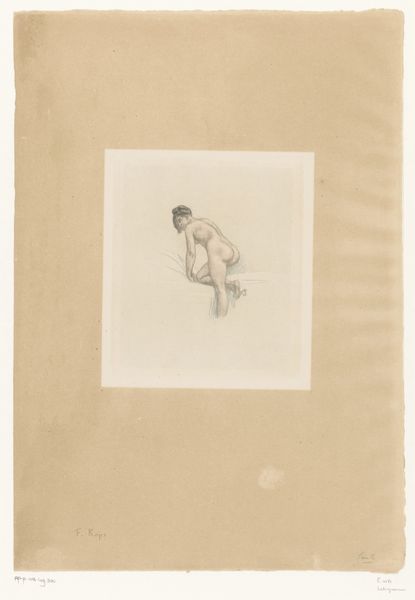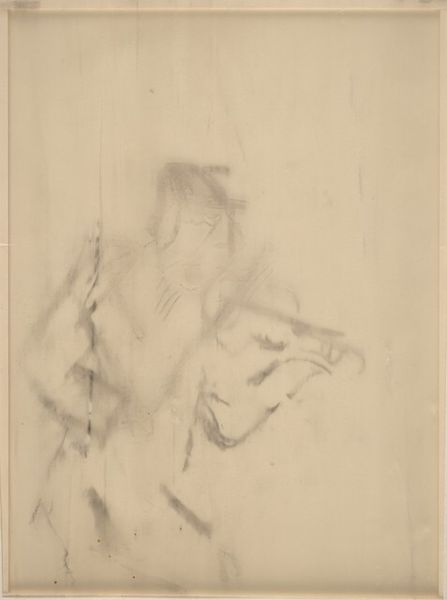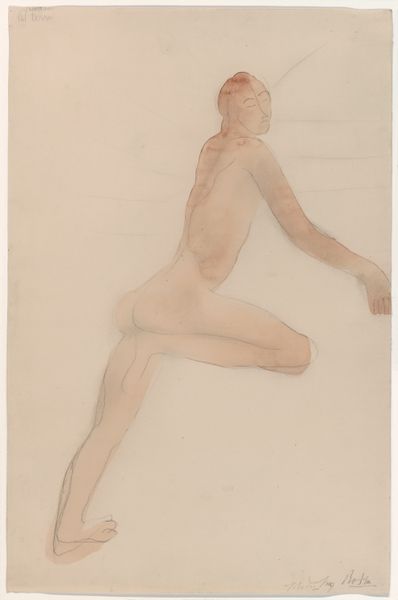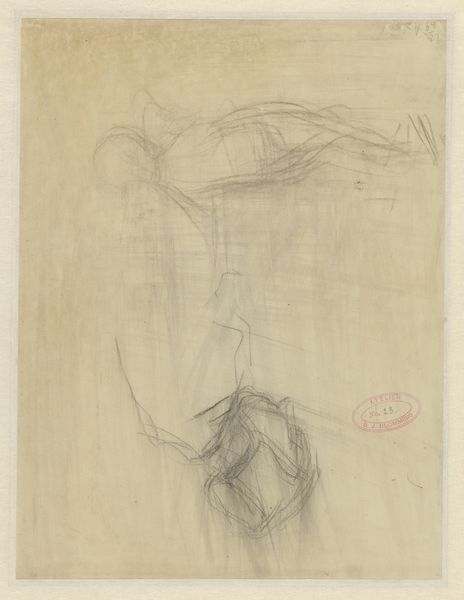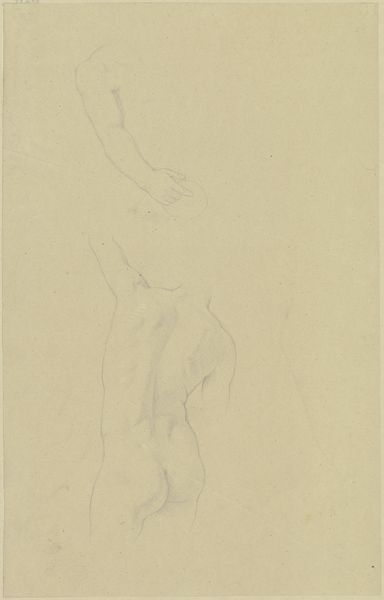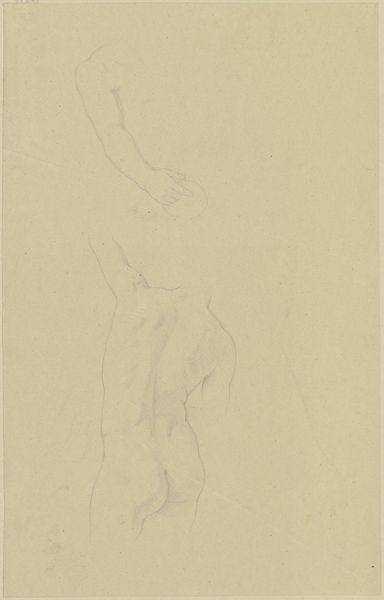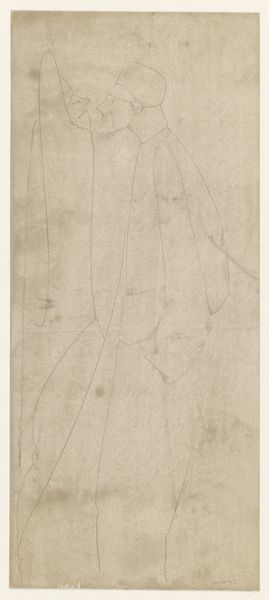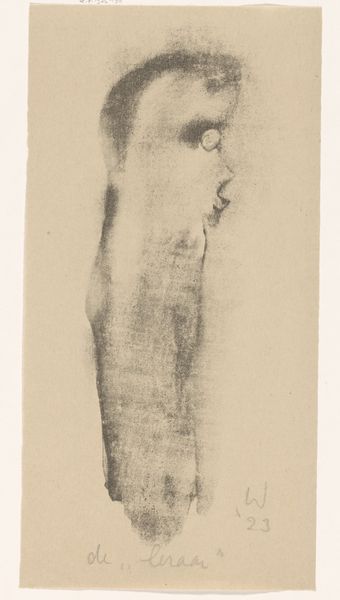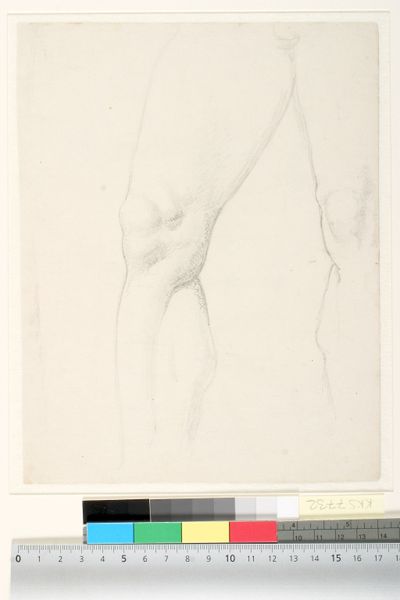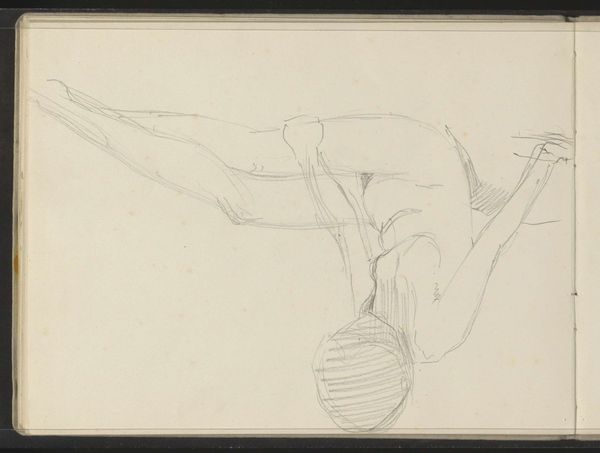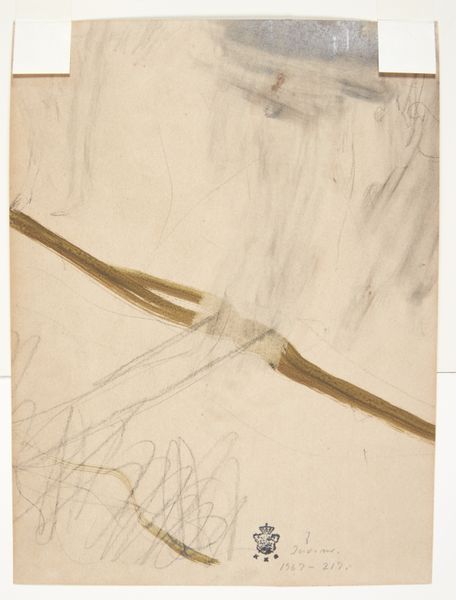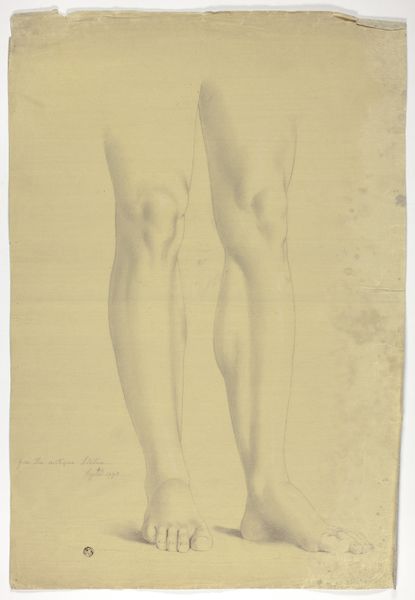
drawing
#
pencil drawn
#
photo of handprinted image
#
drawing
#
shape in negative space
#
light pencil work
#
pencil sketch
#
light coloured
#
fading type
#
pencil work
#
watercolour illustration
#
tonal art
Dimensions: 292 mm (height) x 202 mm (width) (bladmaal)
Curator: This drawing, "Studier af en kvindes arm og overkrop," or "Studies of a Woman's Arm and Torso" by Gudrun Traustedt, dating from 1915-1924, employs a delicate pencil technique. What catches your eye in this work? Editor: The tentative lines and use of graphite create a sense of intimacy. I’m curious about what informed her artistic process here. Curator: The paper itself, with its underlying grid, is crucial. It suggests a practice, a study, a readily available material transformed through artistic labor. Consider the red lines - were they pre-printed or added by Traustedt? Are they meant to assist her in proportion or is there an alternate method? What implications does that have for the status of the "sketch" as a final work? Editor: That's interesting, I hadn't thought about the paper itself. It blurs the lines between technical drawing and fine art, doesn't it? Do you see this drawing reflecting larger cultural shifts in the understanding of materials? Curator: Precisely! Think about the socio-economic context. This was a time of shifting artistic values, where mass-produced materials began infiltrating the art world. How might the availability and affordability of such paper have democratized the artistic process, moving away from costly bespoke materials? Could that democratization change the perception of the labour and, by consequence, perceived expertise required to become an artist? Editor: I hadn't considered that this could be a comment on democratization and shifting values! I find that fascinating! Curator: This drawing then transcends its immediate representation. The materials become integral to understanding its meaning and how Traustedt positioned herself as a working artist in a changing world. What have you taken from it? Editor: It made me consider the usually invisible supports upon which artworks are created. I think I'll pay closer attention to that element in the future. Thank you!
Comments
No comments
Be the first to comment and join the conversation on the ultimate creative platform.
